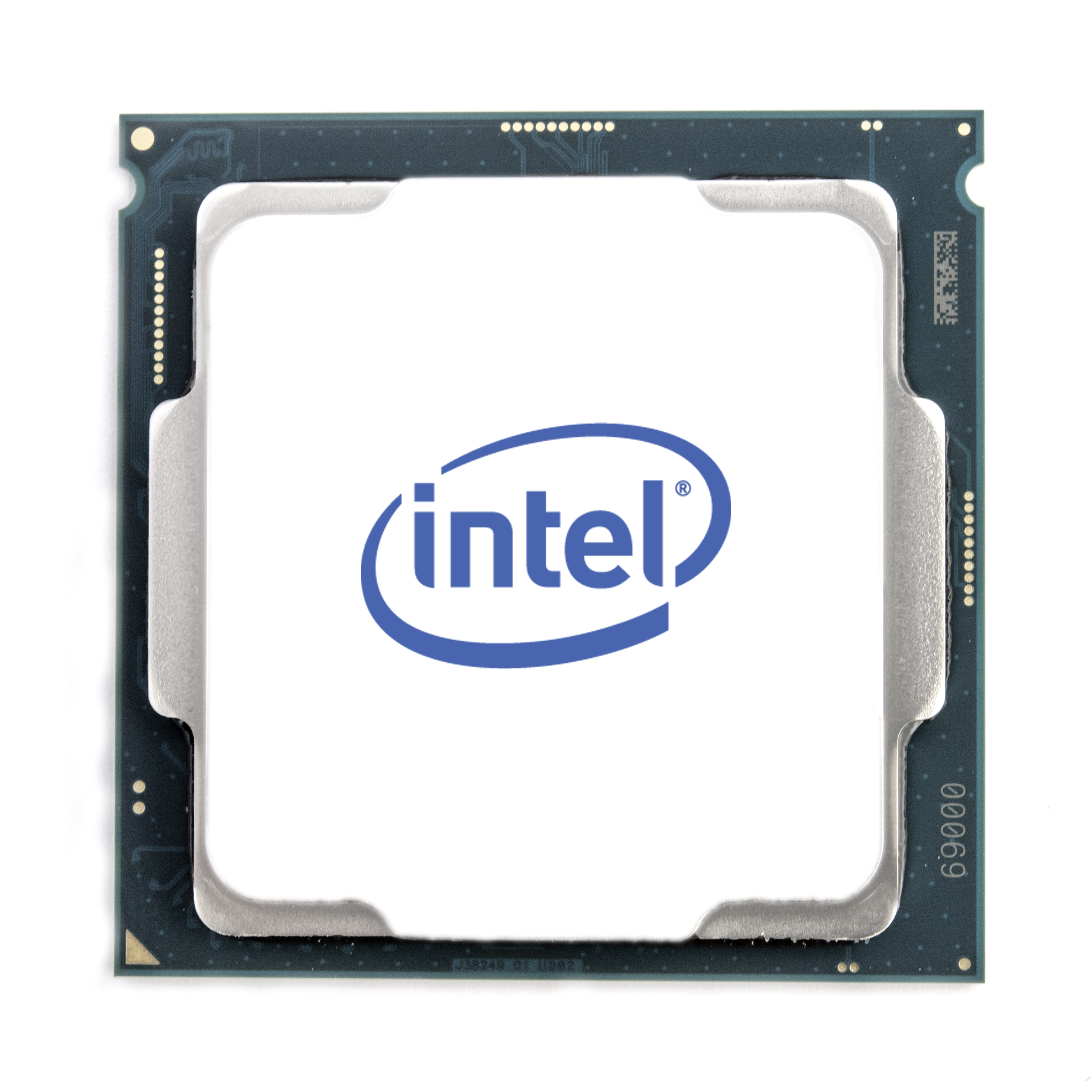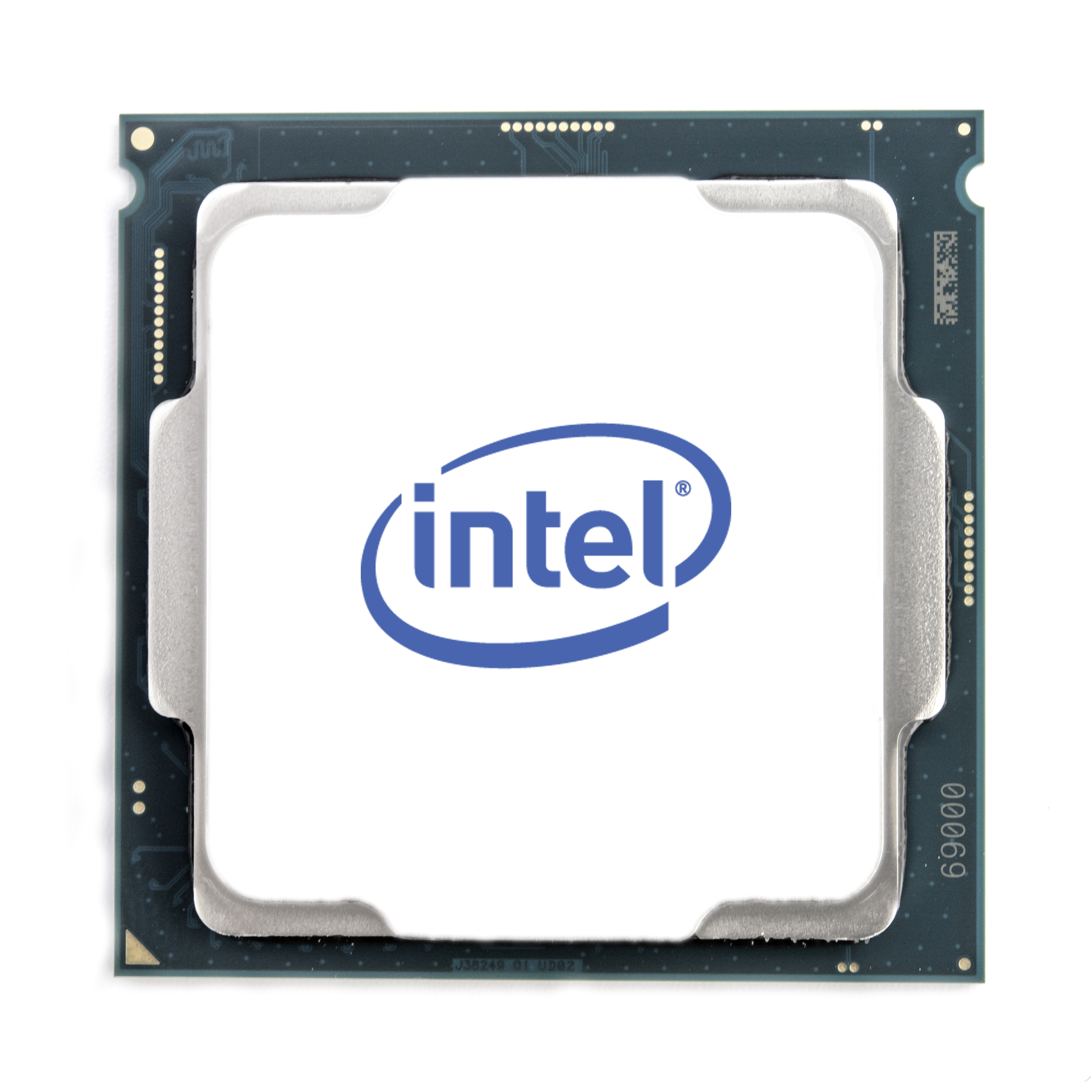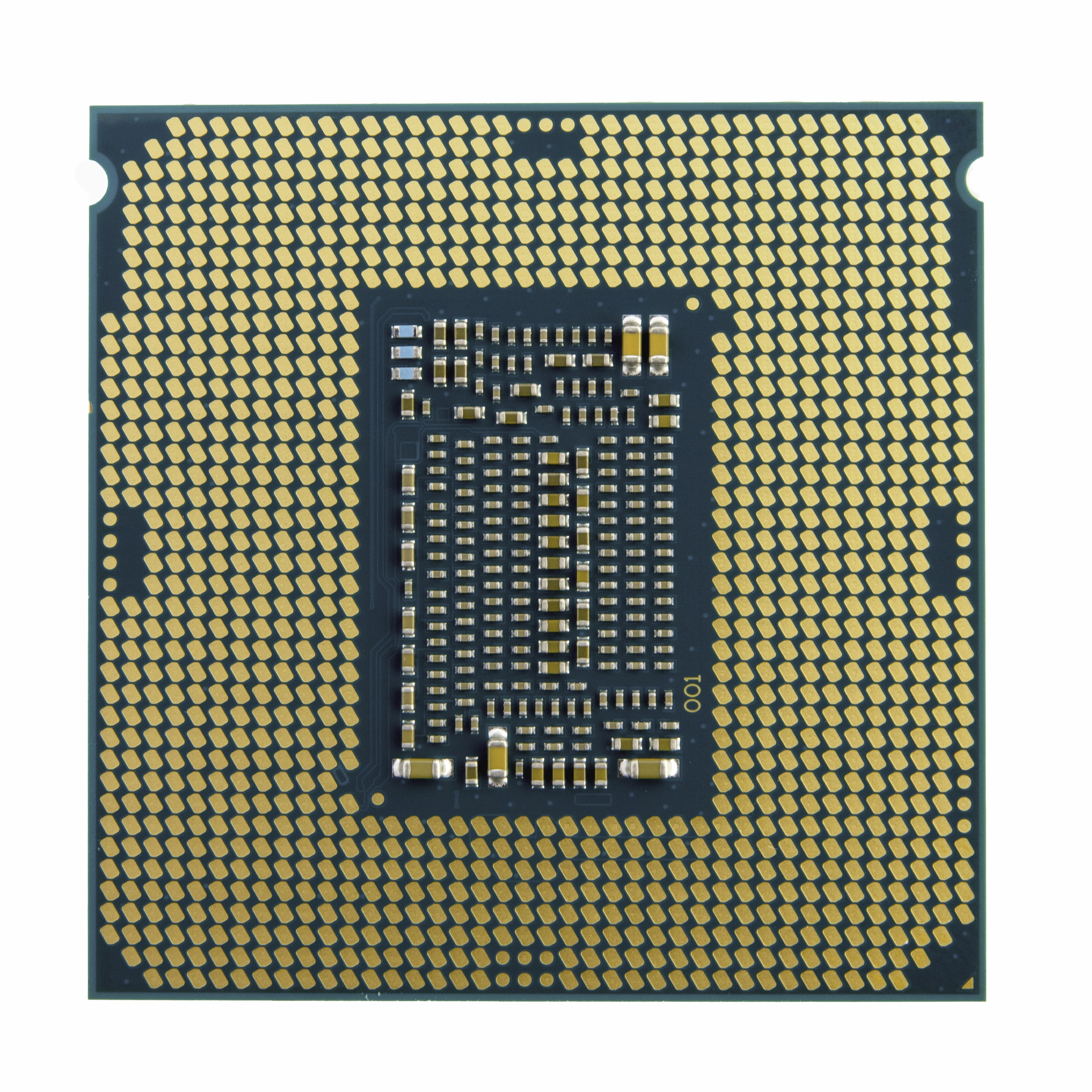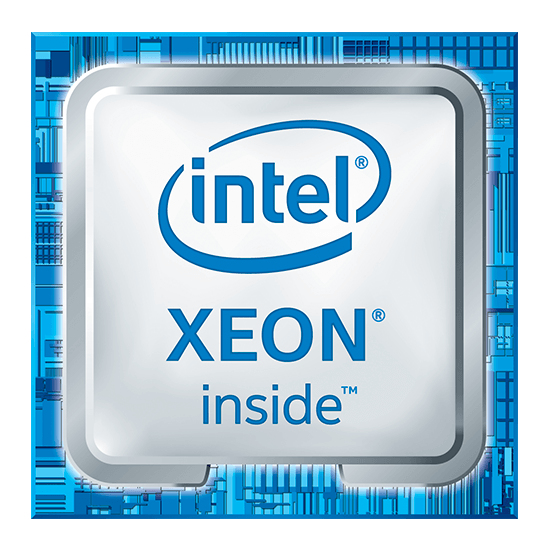- Productcode
- CM8068404225303
- Merk
- Intel
- Categorie
- Processoren > Socket 1151
- Artikelnummer
- 00021146
- EAN-code
- 5054444271743
Niet op voorraad |
|
|---|---|
| Warbout Distributie | Niet op voorraad |
Dit product is helaas niet meer bestelbaar Intel Xeon E-2278G Processor (16MB Cache, up to 5 GHz)
Intel® Optane™ Memory Supported
Intel® Optane™ memory is a revolutionary new class of non-volatile memory that sits in between system memory and storage to accelerate system performance and responsiveness. When combined with the Intel® Rapid Storage Technology Driver, it seamlessly manages multiple tiers of storage while presenting one virtual drive to the OS, ensuring that data frequently used resides on the fastest tier of storage. Intel® Optane™ memory requires specific hardware and software configuration.
Intel® Turbo Boost Technology
Intel® Turbo Boost Technology dynamically increases the processor's frequency as needed by taking advantage of thermal and power headroom to give you a burst of speed when you need it, and increased energy efficiency when you don’t.
Intel® vPro™ Platform Eligibility
Intel® vPro™ Technology is a set of security and manageability capabilities built into the processor aimed at addressing four critical areas of IT security: 1) Threat management, including protection from rootkits, viruses, and malware 2) Identity and web site access point protection 3) Confidential personal and business data protection 4) Remote and local monitoring, remediation, and repair of PCs and workstations.
Intel® Hyper-Threading Technology
Intel® Hyper-Threading Technology (Intel® HT Technology) delivers two processing threads per physical core. Highly threaded applications can get more work done in parallel, completing tasks sooner.
Intel® Virtualization Technology (VT-x)
Intel® Virtualization Technology (VT-x) allows one hardware platform to function as multiple “virtual” platforms. It offers improved manageability by limiting downtime and maintaining productivity by isolating computing activities into separate partitions.
Intel® Virtualization Technology for Directed I/O (VT-d)
Intel® Virtualization Technology for Directed I/O (VT-d) continues from the existing support for IA-32 (VT-x) and Itanium® processor (VT-i) virtualization adding new support for I/O-device virtualization. Intel VT-d can help end users improve security and reliability of the systems and also improve performance of I/O devices in virtualized environments.
Intel® VT-x with Extended Page Tables (EPT)
Intel® VT-x with Extended Page Tables (EPT), also known as Second Level Address Translation (SLAT), provides acceleration for memory intensive virtualized applications. Extended Page Tables in Intel® Virtualization Technology platforms reduces the memory and power overhead costs and increases battery life through hardware optimization of page table management.
Intel® TSX-NI
Intel® Transactional Synchronization Extensions New Instructions (Intel® TSX-NI) are a set of instructions focused on multi-threaded performance scaling. This technology helps make parallel operations more efficient via improved control of locks in software.
Intel® 64
Intel® 64 architecture delivers 64-bit computing on server, workstation, desktop and mobile platforms when combined with supporting software.¹ Intel 64 architecture improves performance by allowing systems to address more than 4 GB of both virtual and physical memory.
Instruction Set
An instruction set refers to the basic set of commands and instructions that a microprocessor understands and can carry out. The value shown represents which Intel’s instruction set this processor is compatible with.
Instruction Set Extensions
Instruction Set Extensions are additional instructions which can increase performance when the same operations are performed on multiple data objects. These can include SSE (Streaming SIMD Extensions) and AVX (Advanced Vector Extensions).
Idle States
Idle States (C-states) are used to save power when the processor is idle. C0 is the operational state, meaning that the CPU is doing useful work. C1 is the first idle state, C2 the second, and so on, where more power saving actions are taken for numerically higher C-states.
Enhanced Intel SpeedStep® Technology
Enhanced Intel SpeedStep® Technology is an advanced means of enabling high performance while meeting the power-conservation needs of mobile systems. Conventional Intel SpeedStep® Technology switches both voltage and frequency in tandem between high and low levels in response to processor load. Enhanced Intel SpeedStep® Technology builds upon that architecture using design strategies such as Separation between Voltage and Frequency Changes, and Clock Partitioning and Recovery.
Thermal Monitoring Technologies
Thermal Monitoring Technologies protect the processor package and the system from thermal failure through several thermal management features. An on-die Digital Thermal Sensor (DTS) detects the core's temperature, and the thermal management features reduce package power consumption and thereby temperature when required in order to remain within normal operating limits.
Intel® Optane™ memory is a revolutionary new class of non-volatile memory that sits in between system memory and storage to accelerate system performance and responsiveness. When combined with the Intel® Rapid Storage Technology Driver, it seamlessly manages multiple tiers of storage while presenting one virtual drive to the OS, ensuring that data frequently used resides on the fastest tier of storage. Intel® Optane™ memory requires specific hardware and software configuration.
Intel® Turbo Boost Technology
Intel® Turbo Boost Technology dynamically increases the processor's frequency as needed by taking advantage of thermal and power headroom to give you a burst of speed when you need it, and increased energy efficiency when you don’t.
Intel® vPro™ Platform Eligibility
Intel® vPro™ Technology is a set of security and manageability capabilities built into the processor aimed at addressing four critical areas of IT security: 1) Threat management, including protection from rootkits, viruses, and malware 2) Identity and web site access point protection 3) Confidential personal and business data protection 4) Remote and local monitoring, remediation, and repair of PCs and workstations.
Intel® Hyper-Threading Technology
Intel® Hyper-Threading Technology (Intel® HT Technology) delivers two processing threads per physical core. Highly threaded applications can get more work done in parallel, completing tasks sooner.
Intel® Virtualization Technology (VT-x)
Intel® Virtualization Technology (VT-x) allows one hardware platform to function as multiple “virtual” platforms. It offers improved manageability by limiting downtime and maintaining productivity by isolating computing activities into separate partitions.
Intel® Virtualization Technology for Directed I/O (VT-d)
Intel® Virtualization Technology for Directed I/O (VT-d) continues from the existing support for IA-32 (VT-x) and Itanium® processor (VT-i) virtualization adding new support for I/O-device virtualization. Intel VT-d can help end users improve security and reliability of the systems and also improve performance of I/O devices in virtualized environments.
Intel® VT-x with Extended Page Tables (EPT)
Intel® VT-x with Extended Page Tables (EPT), also known as Second Level Address Translation (SLAT), provides acceleration for memory intensive virtualized applications. Extended Page Tables in Intel® Virtualization Technology platforms reduces the memory and power overhead costs and increases battery life through hardware optimization of page table management.
Intel® TSX-NI
Intel® Transactional Synchronization Extensions New Instructions (Intel® TSX-NI) are a set of instructions focused on multi-threaded performance scaling. This technology helps make parallel operations more efficient via improved control of locks in software.
Intel® 64
Intel® 64 architecture delivers 64-bit computing on server, workstation, desktop and mobile platforms when combined with supporting software.¹ Intel 64 architecture improves performance by allowing systems to address more than 4 GB of both virtual and physical memory.
Instruction Set
An instruction set refers to the basic set of commands and instructions that a microprocessor understands and can carry out. The value shown represents which Intel’s instruction set this processor is compatible with.
Instruction Set Extensions
Instruction Set Extensions are additional instructions which can increase performance when the same operations are performed on multiple data objects. These can include SSE (Streaming SIMD Extensions) and AVX (Advanced Vector Extensions).
Idle States
Idle States (C-states) are used to save power when the processor is idle. C0 is the operational state, meaning that the CPU is doing useful work. C1 is the first idle state, C2 the second, and so on, where more power saving actions are taken for numerically higher C-states.
Enhanced Intel SpeedStep® Technology
Enhanced Intel SpeedStep® Technology is an advanced means of enabling high performance while meeting the power-conservation needs of mobile systems. Conventional Intel SpeedStep® Technology switches both voltage and frequency in tandem between high and low levels in response to processor load. Enhanced Intel SpeedStep® Technology builds upon that architecture using design strategies such as Separation between Voltage and Frequency Changes, and Clock Partitioning and Recovery.
Thermal Monitoring Technologies
Thermal Monitoring Technologies protect the processor package and the system from thermal failure through several thermal management features. An on-die Digital Thermal Sensor (DTS) detects the core's temperature, and the thermal management features reduce package power consumption and thereby temperature when required in order to remain within normal operating limits.
Andere features |
Maximum intern geheugen | 128 GB |
Eisen aan de omgeving |
Tcase | 73 °C |
| Tjunction | 100 °C | |
| Producttype | DDR4-SDRAM | |
| Maximaal geheugen grafische adapter | 128 GB | |
| Lanceringsdatum | Q2'19 | |
| 4096x2304@60Hz | ||
| Status | Launched | |
| Maximaal geheugen | 128 GB | |
| Processor-id | 0x3E9A | |
| Bussnelheid | 8 GT/s | |
Geheugen |
Dual-channel GB | |
| Geheugentypen ondersteund door processor | DDR4-SDRAM | |
| Klokgeheugen-snelheden ondersteund door processor | 2666 MHz | |
Gewicht en omvang |
Verpakkingsgrootte processor | 37.5mm x 37.5mm mm |
Grafisch |
Ingebouwde grafische adapter | Ja |
| Aparte grafische adapter | Nee | |
| On-board graphics adapter model | Intel UHD Graphics P630 | |
| Discreet grafische adapter-model | Not available | |
| Maximaal geheugen ingebouwde grafische adapter | 128 GB | |
| Basisfrequentie ingebouwde grafische adapter | 350 MHz | |
| Grafische max dynamische frequentie | 1200 MHz | |
| 24 Hz | ||
| 4K-ondersteuning | Ja | |
| On-board grafische adapter DirectX-versie | 12.0 | |
| On-board grafische adapter OpenGL versie | 4.5 | |
| Maximale resolutie (DisplayPort) | 4096 x 2304 pixels | |
| Maximale resolutie (eDP - Integrated Flat Panel) | 4096 x 2304 pixels | |
| Apparaat-ID | 0x3E9A | |
Kenmerken |
Execute Disable Bit | Ja |
| Idle States | Ja | |
| Thermal Monitoring Technologies | Ja | |
| Maximaal aantal PCI Express-lijnen | 16 | |
| PCI Express slots versie | 3.0 | |
| PCI Express configuraties | 1x16,2x8,1x8+2x4 | |
| Ondersteunde instructie sets | SSE4.1,SSE4.2,AVX 2.0 | |
| Schaalbaarheid | 1S | |
| CPU configuratie (max) | 1 | |
| Ingebouwde opties beschikbaar | Nee | |
| PCI Express CEM revisie | 3.0 | |
| Code geharmoniseerd systeem (HS) | 8542310001 | |
| G077159 | ||
| Export Control Classification Number (ECCN) | 5A992C | |
| Marktsegment | Server | |
Processor |
ARK ID processor | 193745 |
| Codenaam processor | Coffee Lake | |
| Turbo-frequentie (max) | 5 GHz | |
| Thermal Design Power (TDP) | 80 W | |
| Processor cache type | Smart Cache | |
| Processor cache | 16 MB | |
| Systeembus | 8 GT/s | |
| Processor aantal threads | 16 | |
| Processor operating modes | 64-bit | |
| Processor model | E-2278G | |
| Basisfrequentie processor | 3.4 GHz | |
| Processor-fabrikant | Intel | |
| Inclusief koeler | Nee | |
| Box | Nee | |
| Processor-productieproces | 14 nm | |
| Component voor | Server/Workstation | |
| Processorsocket | LGA 1151 (Socket H4) | |
| Aantal processorkernen | 8 | |
| Processorfamilie | Intel Xeon E | |
Processor speciale functies |
Ja | |
| Intel® Turbo Boost Technology | 2.0 | |
| Intel® vPro™ Technology | Ja | |
| Intel® Quick Sync Video Technology | Ja | |
| Intel InTru 3D Technology | Ja | |
| Intel® Clear Video HD Technology (Intel® CVT HD) | Ja | |
| Intel® AES New Instructions (Intel® AES-NI) | Ja | |
| Enhanced Intel SpeedStep Technology | Ja | |
| Intel® Trusted Execution Technology | Ja | |
| Intel® Memory Protection Extensions (Intel® MPX) | Ja | |
| Intel® VT-x with Extended Page Tables (EPT) | Ja | |
| Intel® Secure Key | Ja | |
| Intel® TSX-NI | Ja | |
| Intel® OS Guard | Ja | |
| Intel® Clear Video-technologie | Ja | |
| Intel® Software Guard Extensions (Intel® SGX) | Ja | |
| Intel® 64 | Ja | |
| Intel® Virtualization Technology (VT-x) | Ja | |
| Intel® Optane™ Memory Ready | Ja | |
| Intel® Boot Guard | Ja | |
| Intel® vPro™ Platform Eligibility | Ja | |
| Intel® Turbo Boost Technology 2.0 frequency | 5 GHz | |
| Intel® Transactional Synchronization Extensions | Ja | |
Technische details |
Processorfamilie | Intel Xeon E |
| Processor kloksnelheid | 3.4 GHz | |
| Aantal processorkernen | 8 | |
| Processorsocket | LGA 1151 (Socket H4) | |
| Component voor | Server/Workstation | |
| Processor-productieproces | 14 nm | |
| Box | Nee | |
| Inclusief koeler | Nee | |
| Processor model | E-2278G | |
| Processor aantal threads | 16 | |
| Processor operating modes | 64-bit | |
| Processor cache | 16 MB | |
| Turbo-frequentie (max) | 5 GHz | |
| Codenaam processor | Coffee Lake | |
| ARK ID processor | Dual | |
| Thermal Design Power (TDP) | 80 W | |

 RMA aanvragen
RMA aanvragen  Mijn Account
Mijn Account 





